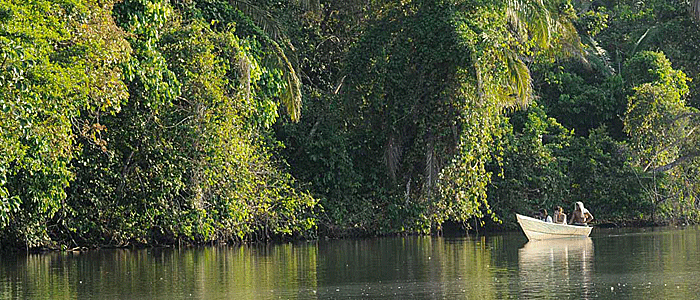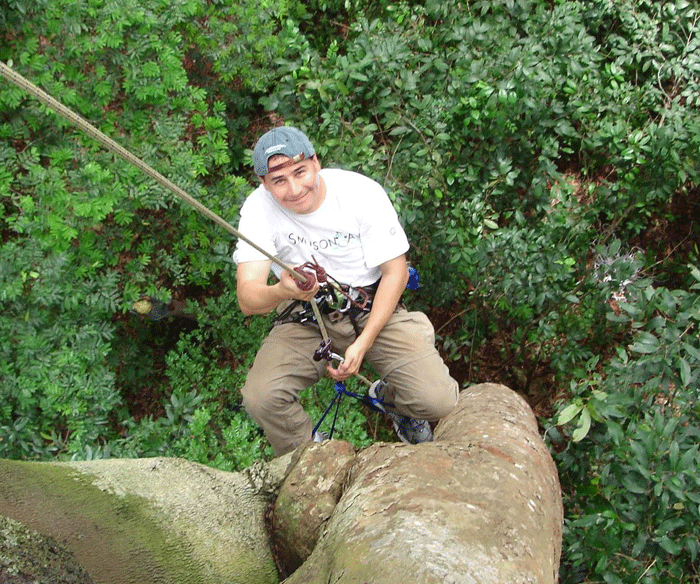Weighing the balance
How do you develop some of the world’s richest deposits of oil and natural gas while also preserving some of the most pristine and biodiverse rainforest in the world? Alfonso Alonso is hoping to find a way.
As Smithsonian employees, we all work towards the same goal: to increase and diffuse knowledge. For some of us, that means designing new exhibits for our 30 million annual visitors or carefully studying artifacts dating back hundreds of years, or tending to elephants and scooping up the gentle giants’ poop. Hey, that’s nature. But for Alfonso Alonso of the Smithsonian Conservation Biology Institute, nature is his job–his office is the vast Amazon forest of Peru and his job description is an ambitious one: study the vast species in the Amazon and find a way to protect them from, well, us.
A native of Mexico, Alonso studied biology at Universidad Nacional Autónoma de México and at the University of Florida and has been working at SCBI for the past 13 years. The Peruvian Amazon is an ideal location for his work as it is home to thousands of species that interact with each other, are relatively little known, and are facing increasing threats from human interventions. It is thought that the Peruvian forest in the foothills of the Andean Mountains served as a refuge for species during the last glaciation and later was the source of species for the entire Amazon basin. Many fascinating and unfortunately, also threatened and endangered species, such as jaguars, macaws, Amazon River dolphins, black spider monkeys and poison dart frogs, are found in this part of the world.
By scientists such as Alonso are not the only ones attracted to the drawn to the Amazon; the Peruvian government sees great potential for resource utilization in the region, including oil extraction, gas exploration and copper mining as well as hydroelectric power. This may cause a loss of habitat not only for animals but also the destruction of ecosystems that human beings are dependent upon, often in subtle ways we do not completely understand. Given the government’s interest in developing the area’s natural resources, Alonso’s goal is to use best environmental practices to avoid, minimize, mitigate and restore the direct and indirect environmental impacts of development. Without finding a way to provide alternative sources of income to local human communities, Alonso warns that habitats will disappear and many species may go extinct. He has already noted drastic declines in the primate population in the areas since his first visit in 1997.
To balance the needs of the wildlife with the interest of the government, Alonso suggests worldwide sustainability efforts. “I believe that whatever we do today to conserve habitats will be reflected in the survival of multiple species that not only benefit humanity now but also will also be part of ecosystem for the benefit of generations to come,” says Alonso. “The principles of sustainability must be applied everywhere. If we use natural resources wisely, we can reduce the demand for them. As we need less, resources can be better managed.” In years to come, Alonso hopes to work with the Peruvian government to develop strategies to extract the Amazon’s resources in a sustainable way.
Posted: 10 May 2013





